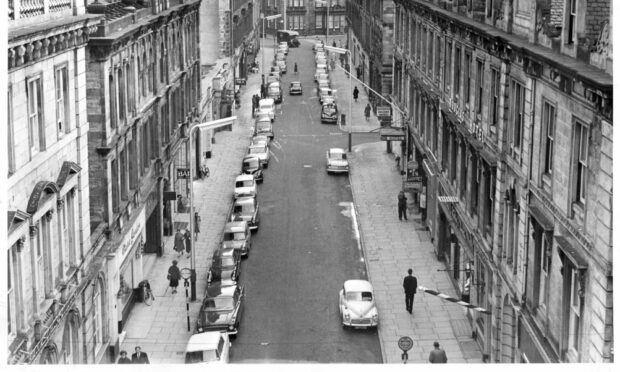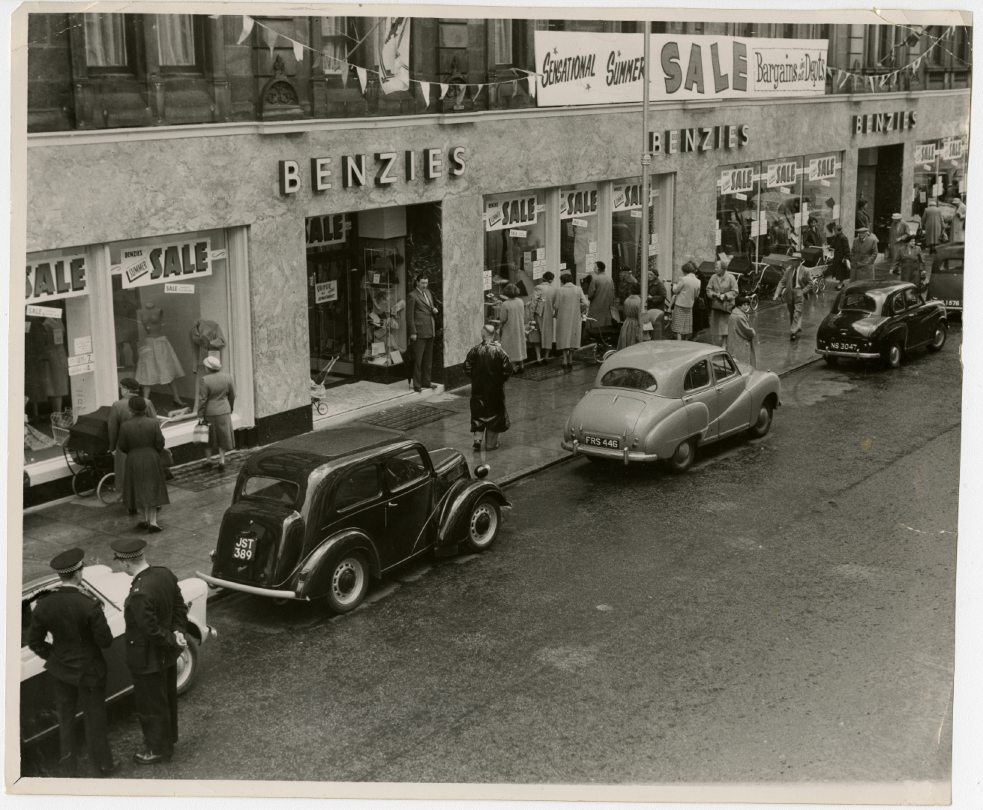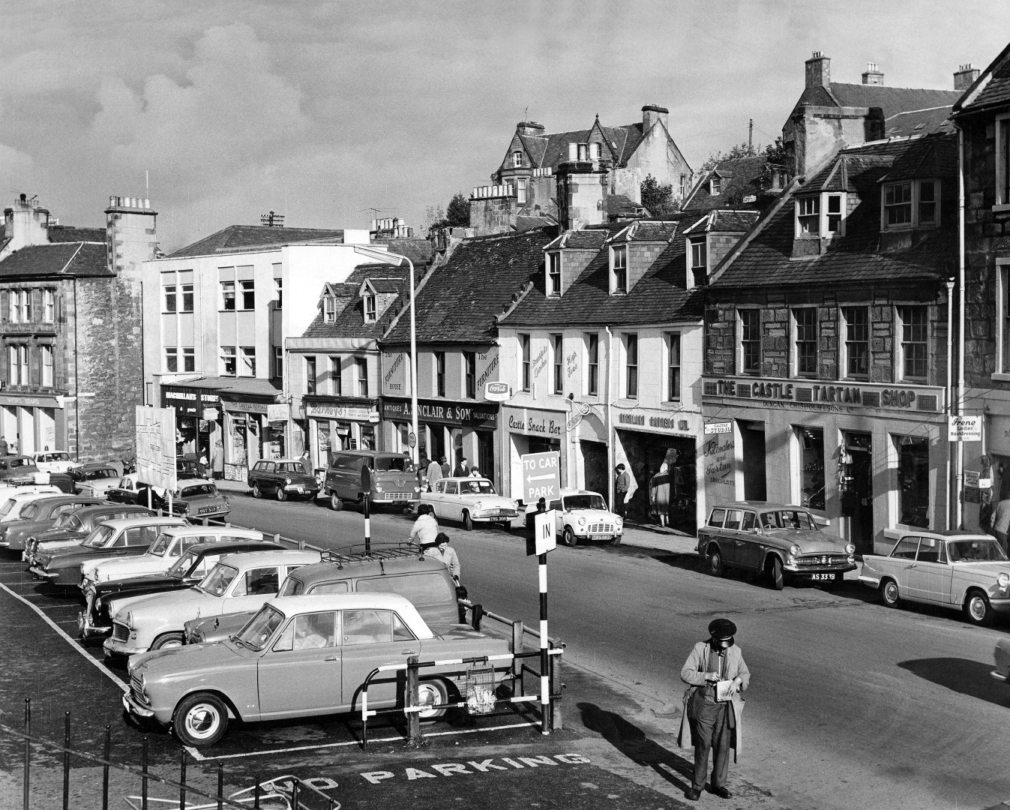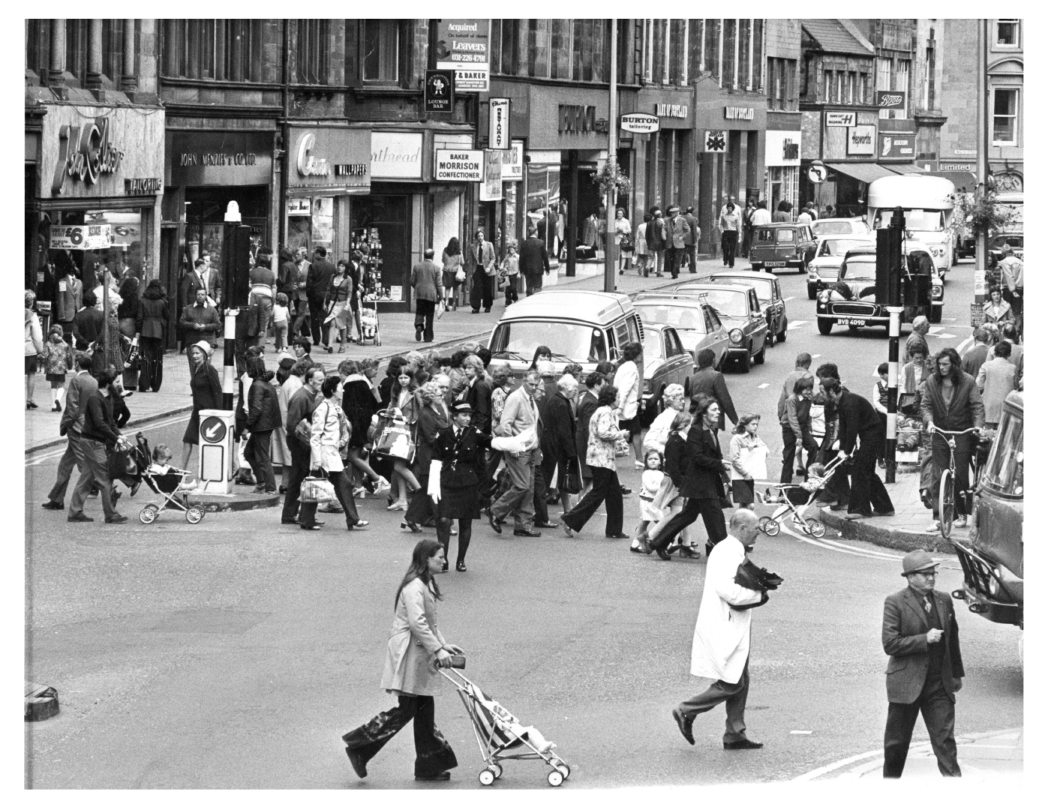As a port town, Inverness has a long history as a centre of commerce, with many shops coming and going over the years.
Through the 18th and 19th Centuries, scores of traders opened up in the city centre with the arrival of the railway bringing more goods, customers and opportunities.
In more recent decades, developments like the Eastgate Centre and Falcon Square brought high street names like Debenhams, Laura Ashley and Zara to Inverness – although all have since departed.
In happier fortunes, the stunning Victorian Market has undergone a huge transformation attracting new independent shops to Inverness.
While the redevelopment of the old Arnotts premises promises to be an exciting new chapter for a building synonymous with shopping in Inverness.
Although the face of retail is ever changing, some names will never be forgotten.
1959: Benzies of Inverness
A lamented lost shop in Inverness is Benzies – a city centre stalwart for decades.
Benzie and Miller opened in Inverness after taking over the premises of Young and Chapman in 1952.
The department store offered a new way of shopping with different goods arranged over several floors in one building.
Customers could buy everything from haberdashery items to home furnishings, teapots to top hats.
The successful store also had branches at 1 Drummond Street and 33-49 Baron Taylor Street, and continued trading as Benzies after the firm was bought by House of Fraser in 1957.
Benzies was famed for its annual ‘sensational summer sale’ and keen bargain hunters were known to queue overnight to get first dibs on marked-down goods.
The shop was rebranded as Arnotts during a restructure in the 1970s and continued trading until its closure in 2003.
1964: Castle Street
Although nearly 60 years has passed since this photograph was taken, the Castle Street view has barely changed.
In the 1960s, the buildings on the right were occupied by businesses including The Castle Tartan Shop and the Castle Snack Bar.
The eagle-eyed may spot Inverness house furnishers A Sinclair & Son a bit further down at numbers 37-39.
Sinclair & Son was the go-to shop for furnishing the city’s newest homes on the Lochardil estate in the 1960s.
These days, the old Sinclairs premises is occupied by another long-standing Inverness business: Grahams outdoor equipment specialists.
And Castle Street is still populated by independent businesses, most recently Chisholm’s Highland Dress, the Castle Gallery and cafes.
1965: Woolworths
Woolworths opened on Inverness High Street in 1926 taking over the premises of the Portree Wool Company.
Occupying a prominent site on a busy thoroughfare, Woolies was an instant hit, stocking mass-produced goods at low prices.
By the 1960s, the shop looked very different – a huge refit in 1964 saw the facade modernised beyond recognition – and Woolies was also credited with bringing the first escalator to Inverness.
Anyone who grew up in Inverness will recall saving their pocket money to spend in the brilliant toy department upstairs – if they could make it past the enticing pick’n’mix first, that is.
And from the 1970s, Woolies’ entertainment department was a big draw for shoppers seeking the latest hits on vinyl.
In 2008, changing retail habits and the financial crisis spelled the end for Woolies in Britain, with the Inverness shop closing in December that year.
But it’s still a big miss for its loyal customers and staff who forged firm friendships over the decades.
1971: William Low
Another name long gone from Britain’s high street is the supermarket chain William Low.
Better known as Willie Lows, the Bridge Street shop opened in the new development in April 1971 marking the firm’s return to Inverness.
Willie Lows previously had a shop on Inverness High Street from the turn of the 20th Century, but had to close it in the 1960s because the premises were too small.
The new shop featured all the mod-cons including “extravagant” lighting, spacious aisles, wide shelving and a traditional butchery counter for which Willie Lows was renowned.
Willie Lows prided itself on not stocking pre-packed meat and customers could watch their order being packed and wrapped on the spot.
William Low was taken over by Tesco in 1994, doubling Tesco’s Scottish market share.
1975: High Street
The High Street in Inverness and neighbouring shopping streets were much busier before the Eastgate Centre opened in 1983.
This scene from 1975 shows a thriving thoroughfare packed with shops in the days before the High Street was pedestrianised.
Invernessians might remember some of the lost High Street shops from their youth like Morrison confectioners, the Early Learning Centre, Burtons and John Menzies.
The city centre underwent a transformation in 1990 when the High Street was closed to traffic for good and the occasion was marked with a street party.
1988: Melvens Bookshop
At one time, Melvens was the biggest bookshop in the north of Scotland – a revered independent long before book chains moved into the city.
Melvens was a true part of the fabric of Inverness – having been established at 29 Union Street in 1864.
When it opened in the 1800s, it was not only a bookseller, but a stationer, bookbinder, picture framer, and “a newspaper and periodical agent” run by James Melven.
Melvens continued as a much-loved bookshop and stationer throughout the 20th Century, and was bought over by the Scottish book chain James Thin in the early 1990s.
Sadly both names have disappeared from the city, and the former shop is now a Citizens Advice Bureau.







Conversation